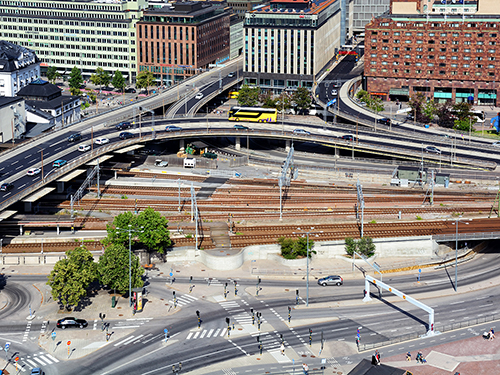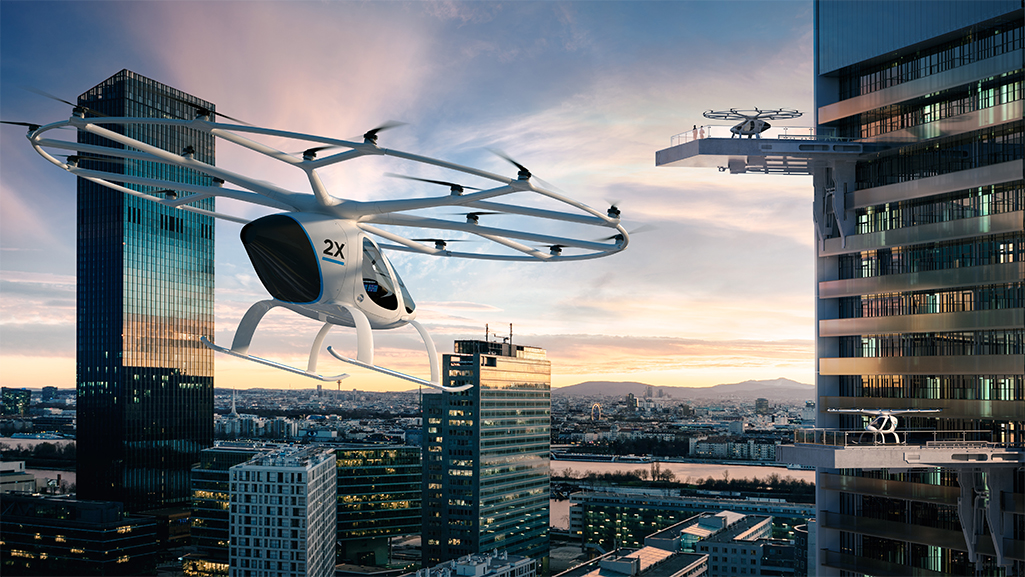More and more people are living in cities. The United Nations estimates that by 2050, two thirds of the world’s population will live in urban areas. This development will push current modes of mobility to their limits and pose new challenges for city and transport planners. Can disruptive technologies, such as autonomous air taxis, offer new solutions to these challenges?
Flying taxis are also called Vertical Take-Off and Landing (VTOL) aircraft. As the name suggests, they can take off, hover, and land vertically. The idea that flying taxis might become a reliable and fast alternative to traditional land-side transport services gained much attention in recent years. Can they seriously become part of the future mobility mix.
An air taxi service could be offered on-demand with a network of landing hubs, similar to cable car stations, where passengers board or disembark. They can operate independently of road networks, and thus of traffic jams, which means arrival time can be accurately calculated. This makes their use particularly promising for airport shuttle services.
In cooperation with Volocopter, the German Fraport AG in Frankfurt is investigating ways to offer flying taxi service to customers soon. Due to high production costs, the service will not initially be suitable for the mass market. However, as the number of users grows, production will also increase, inevitably making every trip cheaper.
Public acceptance of air taxis

But would VTOL services improve accessibility in urban areas? And how big would the demand be?
Between 2011 and 2014, the EU research project myCopter investigated the acceptance of air taxis in cities in England, Germany, and Switzerland. While the citizens of Liverpool were thrilled by the idea of not being stuck in traffic anymore, the Swiss in Zurich reacted more reservedly. In the German city of Tübingen, people were even concerned flying taxis would interfere with their privacy. However, a solution to this problem could be special flight corridors for air taxis, for example above motorways. Traffic there is already busy, so disturbances to residential areas will be few.
Another big concern was the safety of flying taxis. Prof. Dr. Heinrich H. Bülthoff, head of the myCopter project, states: “It’s interesting to see how badly people can judge probabilities. We accept 3,000 victims who die in road crashes every day. The risk of accidents is much lower in the air than on the road. An air taxi would be able to avoid obstacles by flying not only sideways but also above or below them. Apart from that, automatic communication systems, similar to car-to-car communication, can be used for this kind of air traffic. On our roads, on the other hand, we will not see many of those cars in the upcoming decades that do have these communication systems.”
Infrastructure – key to success
Public acceptance will be decisive to introduce air taxis as an addition to public transport. Another important factor is infrastructure. Potential providers are faced with a wide variety of questions: Where should those VTOL hubs be established to reach as many customers as possible? Which pricing system would be profitable? How should the air taxi fleet be built up to ensure a high level of service?
Cities are primarily interested in shifting traffic to air traffic, as a way of reducing congestion on the roads. Building VTOL hubs is also a question of space, a rare commodity in most cities. And planning of those hubs should also include the necessary energy supply and space for maintenance and repairs.

One idea is to simply use rooftops of existing buildings – as is already the case for helicopters today. Estimated costs that the investment would be much lower than building new stations or airports.
Transport modelers will have to deal with challenges like the setup of the on-demand service, the combination with other modes of transport and the selection of good locations for the hubs. Transport demand models can help to simulate and analyze the effects of air taxis on the traffic situation in cities in advance.
Together with my two colleagues, Dr. Petr Senk and Udo Heidl, we at PTV Group developed a modeling algorithm that addresses these challenges and can provide a template for transport demand modeling of air taxis.



